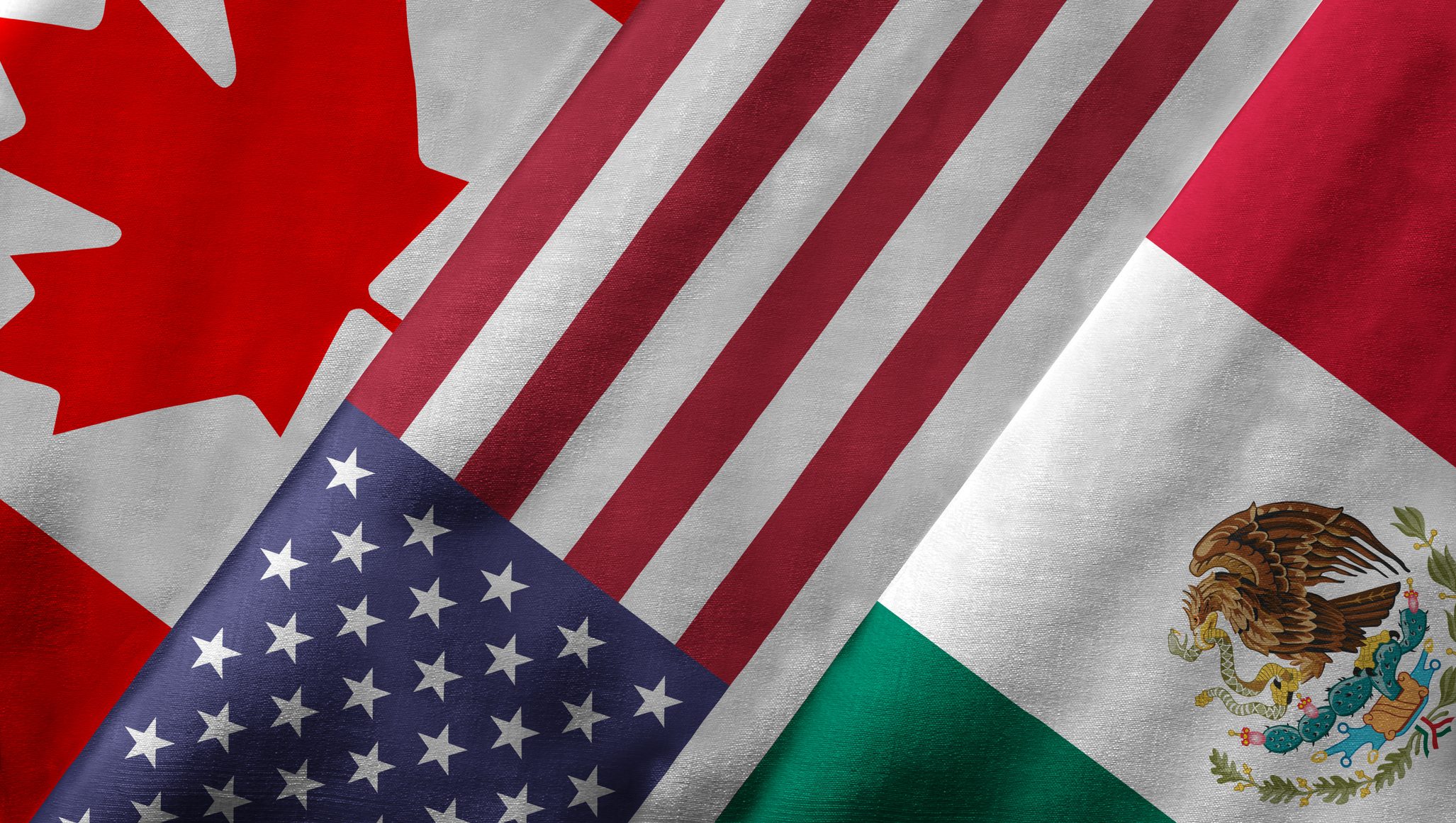On Jan. 29, U.S. Trade Representative Robert Lighthizer, Canadian Minister of Foreign Affairs Chrystia Freeland and Mexican Economy Minister Ildefonso Guajardo met in Montréal for the sixth round of NAFTA negotiations, making few minor strides in anti-corruption laws.
President Donald Trump has described the North American Free Trade Agreement (NAFTA) as an unfair deal, announcing that he is even willing to withdraw from the agreement unless major changes are made.
The seventh NAFTA negotiation talk is scheduled in Mexico City at the end of February, while the last will be held in Washington in March.
With the Mexican elections looming on Apr. 1 and midterm elections for President Trump in Nov. 6, the NAFTA representatives may proceed either “on a fairly short track or on a longer track.” Each country takes its unique stance on pressing issues, such as the automobile and dairy industries, though a general animosity toward higher tariffs is unanimous.
For the U.S., President Trump’s administration hopes to reduce America’s trade deficit — ensuring that imports do not exceed exports. The U.S. currently has a trade surplus of $12.5 billion with Canada while experiencing a trade deficit of $59 billion with Mexico in 2016.
A senior fellow at the Peterson Institute for International Economics, Caroline Freund, says, “Canada and Mexico are more dependent on the U.S. than the U.S. is on them, so that’s the biggest thing the U.S. has going right now.”
Canada’s main interest in the NAFTA negotiations lies in ensuring its trade partners do not add tariffs on goods with currently low tariffs. Namely, Canadians are concerned with its softwood lumber and energy companies who depend upon free trade with the United States. About 19 percent of U.S. exports leave to Canada, which is America’s largest export market for American-made goods.
Though if President Trump’s administration decides to pull out of NAFTA, between Canada and Mexico, the latter has the most to lose from a potential U.S. withdrawal. Mexico’s goals in the NAFTA negotiations parallel those of Canada: they don’t want higher tariffs on their products. The U.S. purchases about 80 percent of all Mexican exports, making the Mexicans highly dependent on trade with the U.S. However, Mexico does have some leverage on America — that is, it is the second-largest international market for American goods, with about 16 percent of American exports going south of the border.
Considering Canadian and Mexican totals, the U.S. exports 35 percent to its partners north and south of the border — thereby making a withdrawal from NAFTA disadvantageous to Americans also. Since the agreement’s inception, the three countries have become more interdependent on trade.
Canada expressed concern over America’s aims to revoke NAFTA’s Chapter 19 provision, which allows the three partners to challenge any duties one country might add on certain imports. Proponents of Chapter 19 view it as a check on national abuse of import and export laws.
On the other hand, opponents claim that the provision encroaches on national sovereignty by limiting the parameters by which government authorities conduct their anti-dumping duty or countervailing duty investigations.
In 1989 before NAFTA, the Canada-United States Free Trade Agreement (CUSFTA) established Chapter 19 as a special dispute settlement procedure, thereby allowing the two countries to legally challenge anti-dumping or countervailing legislation that one country imposed on its exports. After its founding in 1994, NAFTA then heralded a modified version of Chapter 19.
While the Canadian and Mexican interests lie in maintaining low tariffs on exports, President Trump’s administration is projecting its America First agenda. In terms of the automobile industry, hard-ball negotiator Lighthizer did not back down on the U.S. demand that 85 percent of a car’s parts must be North American — a major increase from the current 62.5 percent requirement — and that 50 percent come from America explicitly to avoid a tariff.
Canada proposed a potential solution to this major overhaul: Rather than counting only car parts, the value of intellectual property should be added too, which would inflate U.S. numbers just enough without disrupting the industry. American, Canadian and Mexican political and economic staff are currently analyzing the viability of this potential solution.
Americans have also proposed the Sunset clause, which would automatically terminate NAFTA every five years unless renewed by all three partners. During the November NAFTA talks, Mexico suggested adapting this termination clause into a review clause to lessen the weight of a full termination — meaning it would force regular reviews of the structure and overall functioning of the agreement, but not threaten termination.
During the fourth round of NAFTA trade talks in October, the U.S. proposed dismantling within a decade Canada’s dairy sector by disassembling its supply management system. Canada’s supply management dairy system allows Canadians the opportunity to collectively negotiate prices and adjust milk production according to consumer demand.
President Trump has dubbed the system unfair to U.S. farmers, namely dairy farmers in Wisconsin. Grassland Dairy Products Inc. recently canceled milk contracts with roughly 75 Wisconsin producers starting this past May 1, attributing the canceled contracts to recent Canadian dairy regulations.
President Trump’s administration has a bone to pick with the highly contentious special program Class 7 within Canada’s National Ingredient Strategy for dairy, which effectively lowered the cost for processors of non-fat solid milk ingredients such as skim milk powder and whole milk powder. As a result, the new class has pushed out American, Australian and New Zealand competitors in the Canadian market.
Not only is it an antagonistic issue for Americans, but the world dairy market is currently oversupplied with milk since an overproduction of milk is paired with a declining consumer demand due to a popularity in milk alternatives such as almond milk and soy milk. Needless to say, Canada has not made any counteroffers in response to America’s demands as the issue is sensitive for rural ridings in central Canada.
Labor standardization has caught the attention of American democrats who have been pushing for higher labor standards from Mexico. Democratic congressman Bill Pascrell said his enthusiasm has been dampened by a “Mexican nonchalance” and lack of progress on labor. “I don’t think they get it,” he added.
However, Mexican representatives disputed the suggestion that they have been skirting around the issue, since they have agreed to raise labor standards, place tougher enforcement on existing laws, provide new worker protections and combat imports linked to child labor.
While currently under NAFTA, the three countries pay next to nothing on most goods crossing the border. However, if the U.S. exits the agreement, tariffs on Canadian and Mexican products will rise, cutting into company sales.
Exiting NAFTA would enact current rules in place by the World Trade Organization (WTO), such as lifting costly tariffs on agricultural exports to Mexico. Wheat would be taxed 15 percent, beef would increase to 25 percent and chicken and potatoes would skyrocket to 75 percent.
While unlikely, though a possibility nonetheless, if President Trump’s administration pulls the plug on NAFTA, the economy will not be the only system affected: The immigration process for professional workers will be affected also.
Canadian and Mexican professionals working and living in the United States under Trade NAFTA, or “TN,” status would be at risk of revocation of their work permits and deportation to their respective countries. The TN visa is a unique immigration category since it was created through NAFTA, not domestic U.S. law. It allows exclusively Canadian and Mexican professionals such as accountants, lawyers, engineers, doctors, dentists and college teachers to live and work in the United States for a three-year period.
The uncertainty of what would happen to Canadian and Mexican professionals with TN status in the United States is most discomforting for some. “It’s a little bit unnerving,” says 30-year-old Mike Doherty, a software engineer from Cambridge, Ontario, working at a large technology company in Silicon Valley.
“I think the really unfortunate thing is that if things totally fall apart, no one really knows what that means. Do people have to leave the country immediately? Is there a six-month grace period? Do you potentially get to stay for the remainder of your work permit? No one really knows.”
This cycle of NAFTA talks will conclude in March, at which President Trump’s administration must decide to continue the conversation or decide if America will exit NAFTA. However, for Lighthizer, the Montréal NAFTA talks were commended: “We finally began to discuss the core issues, so this round was a step forward. But we are progressing very slowly.”
Progressing forward slowly, though, is better than being at a standstill in these NAFTA negotiations.

















